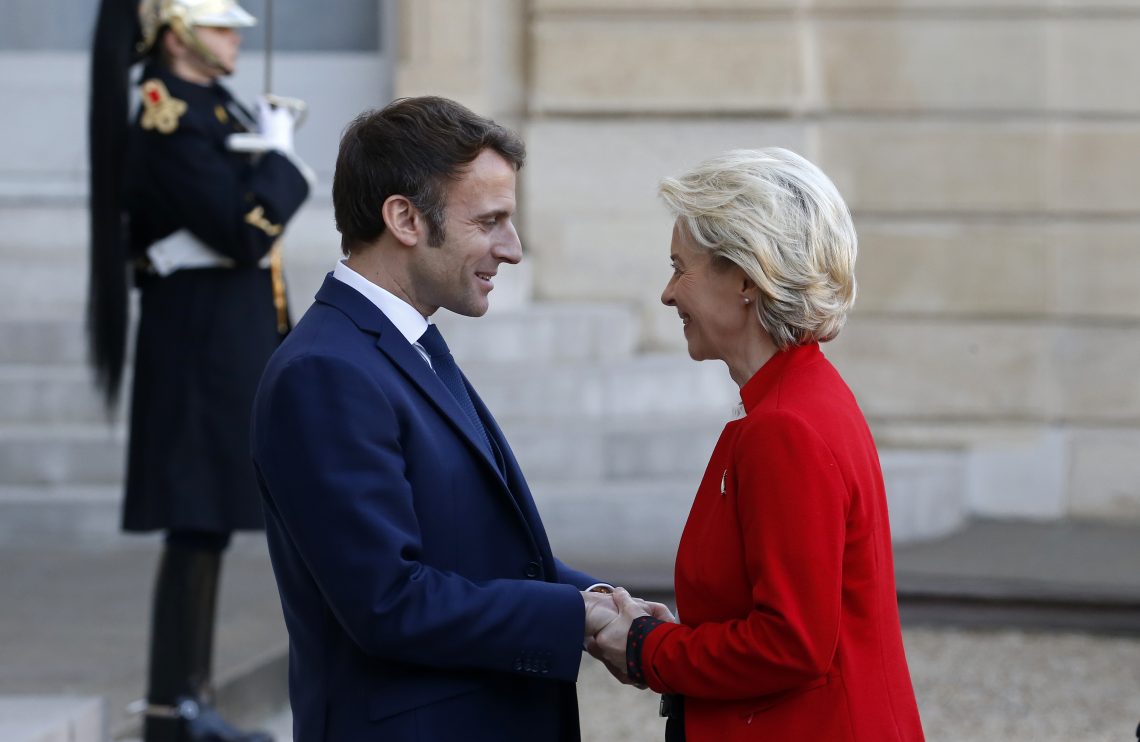A sovereign Europe – necessity or daydream?
Lacking strategic leadership, Europe is highly unlikely to develop a coordinated defense on par with American capabilities in the decades ahead.

In a nutshell
- European security cannot be handled by the EU alone
- The continent has no clear leader and lacks focus
- New frameworks could help tackle existing hurdles
In 2017, one year after Brexit, French President Emmanuel Macron called for a “sovereign Europe” and “strategic autonomy.” With the United Kingdom gone, France had become the undisputed master in military affairs among European Union members. But, on closer inspection, both concepts proposed by the French leader are dangerously vague.
Geography, NATO or EU?
The European Union is not synonymous with Europe. The UK, Norway, Switzerland and Iceland are not members. Referring to the EU as “Europe” suggests the 27 member states could operate as a single political unit. But what may be a strength in trade is a weakness in war. NATO has more members than the EU (at present 30), but it has an undisputed leader: the United States. Without strong leadership, the EU is unable to generate clear strategic will.
Brussels is unable to shape events in Lebanon, Syria or Libya, although it is immediately affected by them.
The European continent could never put together a substitute for U.S. capabilities against a threat from Russia. Geostrategically, European defense makes no sense without Norway, Iceland and Turkey, which control access to the North Atlantic and the Mediterranean. The UK, meanwhile, lends strategic depth: it commands powerful armed forces and has a sophisticated defense industry. It has left the EU, but it cannot leave Europe. European security is inconceivable without London.
Three trends
Three trends are currently forcing Europe to reassess its defense needs:
First, the U.S. commitment to Europe’s defense cannot be taken for granted. The mood in Washington is retreating from “entangling alliances.” Former President Donald Trump dismissed NATO as obsolete. President Joe Biden was quick to reassure European members of the alliance, but he is unlikely to be reelected. (Mr. Trump’s chances of a return to the White House are three to one, according to London bookmakers.) Eleven years ago, Defense Secretary Robert Gates castigated countries that opted for “soft” alternatives and left the “hard” fighting to others. He concluded: “There will be dwindling appetite and patience in the U.S. Congress … to expend precious funds on behalf of nations that are apparently unwilling to devote the necessary resources … to be serious and capable partners in their own defense.”
The second trend is the growing challenge posed by China. The AUKUS agreement underlines the gradual shift of attention and resources to East Asia. In the long run, Asia will be more important for the U.S. than Europe. Unlike China, Russia is a military rival, but not an economic or technological one. The U.S. will continue its pivot to the east.
The third factor is the war in Ukraine. It has rejuvenated the alliance and infused it with a new purpose. Russia will be an enduring threat – one probably more serious than the Soviet Union.
Facts & figures
Europe is a continent with three highly different borders. It is flanked by the Atlantic Ocean in the north and the west. It has an exposed coast in the south. The Mediterranean stretches about 2,500 kilometers from east to west, but Europe’s coastlines spread over about 35,000 km and are difficult to police. Europe’s eastern boundaries have been artificially defined along the Urals – neither a political nor a cultural border. Europe therefore faces two totally different security challenges: military aggression from the east and nonmilitary migratory pressure from the south.
The illusion of sovereignty
Sovereignty, like pregnancy, is not a matter of degree. You either have it or you do not. Brexit has demonstrated that sovereignty resides with national governments.
For the EU, foreign policy has always remained a prerogative of national governments and is coordinated at the intergovernmental level. Relations with Washington, Beijing and Moscow are left to national leaders.
The EU has little influence on Turkey’s political behavior. Brussels is unable to shape events in Lebanon, Syria or Libya, although it is immediately affected by them. The Union’s role in the Middle East rarely goes beyond grand declarations, and there is no EU concept for how to deal with migration from Africa.
EU members have divergent security concerns. Finland and Sweden are worried about Russia. Portugal and Spain focus on Africa and Latin America. Poland and Lithuania demand strict sanctions for Moscow, while Cyprus and Greece are profiting from close ties to the Kremlin. The UK and France have a proud military tradition, but Germany and Sweden see their military more as peacekeepers than enforcers.
Most defense systems take much longer than five years from the time they are ordered until they are combat-ready. The decisive moment will come around 2026-2028.
Concerning fuel imports from Russia (and cash transfers to Moscow), dissent is growing between countries that rely heavily on Russian imports and those that do not. Lithuania has been importing 83 percent of its oil from Russia but is terminating this dependence. It has broken Gazprom’s monopoly by building a port facility for liquefied natural gas at Klaipeda. Other countries balk at such a drastic turnaround. The EU imports about 40 percent of its gas from Russia, but this aggregate figure hides enormous variations: Bulgaria, Slovakia and Finland import more than 90 percent of their gas needs from Russia, while Portugal and Spain import none.
The EU is hopelessly fragmented in its weapons systems. It operates 17 models of tanks, 26 types of howitzers, 20 types of tactical aircraft and 29 different ships. For the U.S., the corresponding figures are one, two, six and four. This creates huge additional costs in development and maintenance. It implies that soldiers who have been trained to operate one specific system cannot operate those of other EU members. The EU battle groups have not been employed on a single mission for 15 years.
The failure of the 2012 merger between UK arms manufacturer BAE and the Franco-German Airbus owner EADS was a strategic mistake. European countries remain weak when it comes to missile technology, space and air defense. Computers and chips are imported, and drones are bought from Turkey and Israel. The EU has no champion in military technology that could stand up to U.S. giants like Lockheed Martin or Raytheon.
Theoretically, the EU could do more for its defense. It has 450 million inhabitants, compared to 330 million in the U.S. Its $17.5 trillion cumulative gross domestic product (GDP) lags that of the U.S. ($21 trillion) by only 15 percent. Its defense spending is $210 billion compared to almost $800 billion. If the Europeans were to spend 4 percent of this GDP on defense like the U.S., it would have to triple its military expenditure. At the moment, more than 75 percent of NATO’s military expenditure comes from outside the EU. At the same time, EU member states spend three times what Russia spends on defense.
Scenarios
There are three lines of possible developments: muddling through with no substantial change, developing the EU into a federated political union, or building up joint capabilities by strengthening national armed forces and more emphasis on interoperability, standardization of equipment and joint training.
Most defense systems take much longer than five years from the time they are ordered until they are combat-ready. So, the first option is almost certain to characterize the next five years. The decisive moment will come around 2026-2028.
Muddling through
Inertia, bureaucratic clumsiness and strong national lobbies could ensure that even in the long run European countries will continue to develop their armed forces according to national concepts, leaving interoperability and leadership to NATO. This alternative has a probability of more than 50 percent.
Leap of faith
The second scenario would be a “great leap forward.” The EU would become a genuine federation of states with European armed forces. A European navy, air force and joint space and cyber capabilities are much more urgently needed than ground forces. But a military union would require a political union. There are three obstacles in the way of such a jump.
First, previous efforts in that direction are not encouraging. A political union proved elusive in the Maastricht treaty. The European Constitution was voted down. The Future Combat Air System will be a test case of whether EU members can overcome their national interests in industrial policy and juste retour mentality (with states hoping to contribute as little as possible while receiving more and more funding).
Second, NATO is successful because the U.S. is the undisputed leader. There is no equivalent leader inside the EU. A strong leader cannot be cobbled together by amalgamating two dozen weak followers. Unless there is a source of strategic purpose and resolve, the EU will remain encumbered by endless committees and diluted, overlapping responsibilities. The Union acts too late, too timidly, too expensively and with too many obfuscating compromises. It speaks loudly and carries a tiny stick. That is particularly awkward when it comes to defense. Simply Europeanizing defense will not deliver jointly what European nations are unable to do separately. What European countries achieved in Afghanistan, Iraq and in Libya would have been impossible without U.S. support. The mission in Mali was undertaken independently of the U.S.; the situation there is now worse than it was.
Third, these crucial decisions would require genuine popular support. The EU is glaringly deficient in providing democratic legitimation and genuine representation. If European defense were forced into the procrustean bed of existing institutions, it would either be determined by unanimity, which gives the weakest partner a veto, or with a majority decision foisted on a doggedly opposed minority. Both alternatives are unrealistic. Therefore, this option will remain highly improbable (not more than 10 percent), at least for the next 20 to 40 years.
Intergovernmental defense and the enlightened hegemon
The third option is between both extremes. It would involve looking beyond rigid institutionalized frames and adopting flexible, ad-hoc solutions. The future will favor small, highly mobile and combinable units, connected through extensive interoperability and joint training, answering each individual crisis through tailor-made responses. The Joint Expeditionary Force, established in 2014 between the UK and most of the Scandinavian countries, is a case in point. So is the Combined Joint Expeditionary Force set up between the UK and France in 2010.
In this scenario, instead of chasing the will-o’-the-wisp of “strategic sovereignty,” European countries would strive for strategic realism and responsibility. It would call for standardized equipment, a preference for European weapon technology, interoperability, standardized training and sufficient interfaces and docking mechanisms to create synergies. A European Military Academy for officers of both EU members and non-EU European countries could ensure a common mindset, which in war is as important as hardware.
Sovereign nations would cooperate on intergovernmental projects that correspond to their various national interests. Cooperation needs leadership, which in Europe has to be collective. It would require a handful of strong nations to move forward and pull others along – but not necessarily all of them.
Such a group makes no sense without Germany. Berlin used to be called a reluctant hegemon. If it cannot step up as an enlightened leader, this option will remain a chimera.
That scenario does not presuppose revolutionary change and would greatly enhance Europe’s capabilities without undermining NATO. It would also provide a bridge between EU and non-EU members; it does in no way preclude the second option, but it provides a more organic, step-by-step approach to that goal. Despite its attractiveness, its probability is probably below 40 percent.








